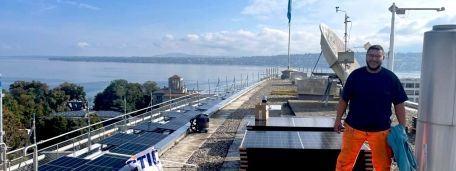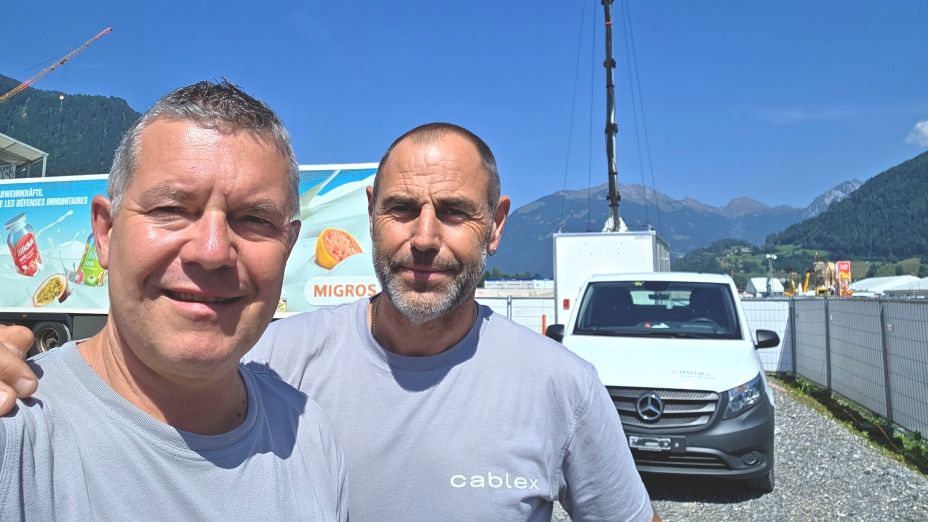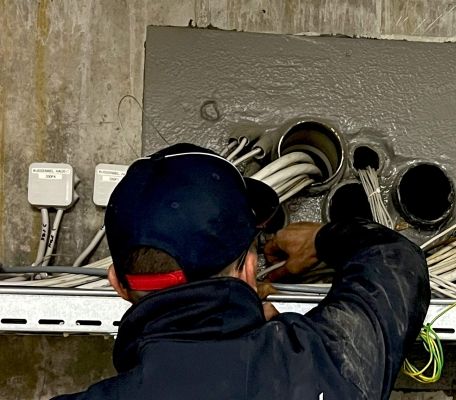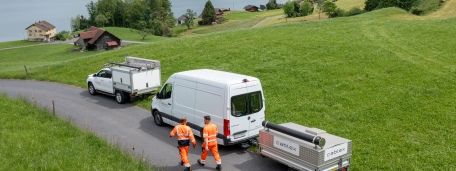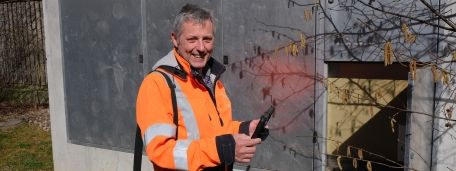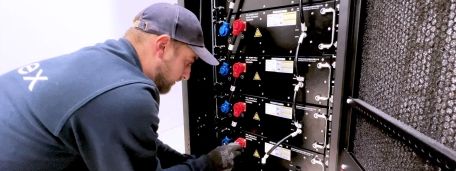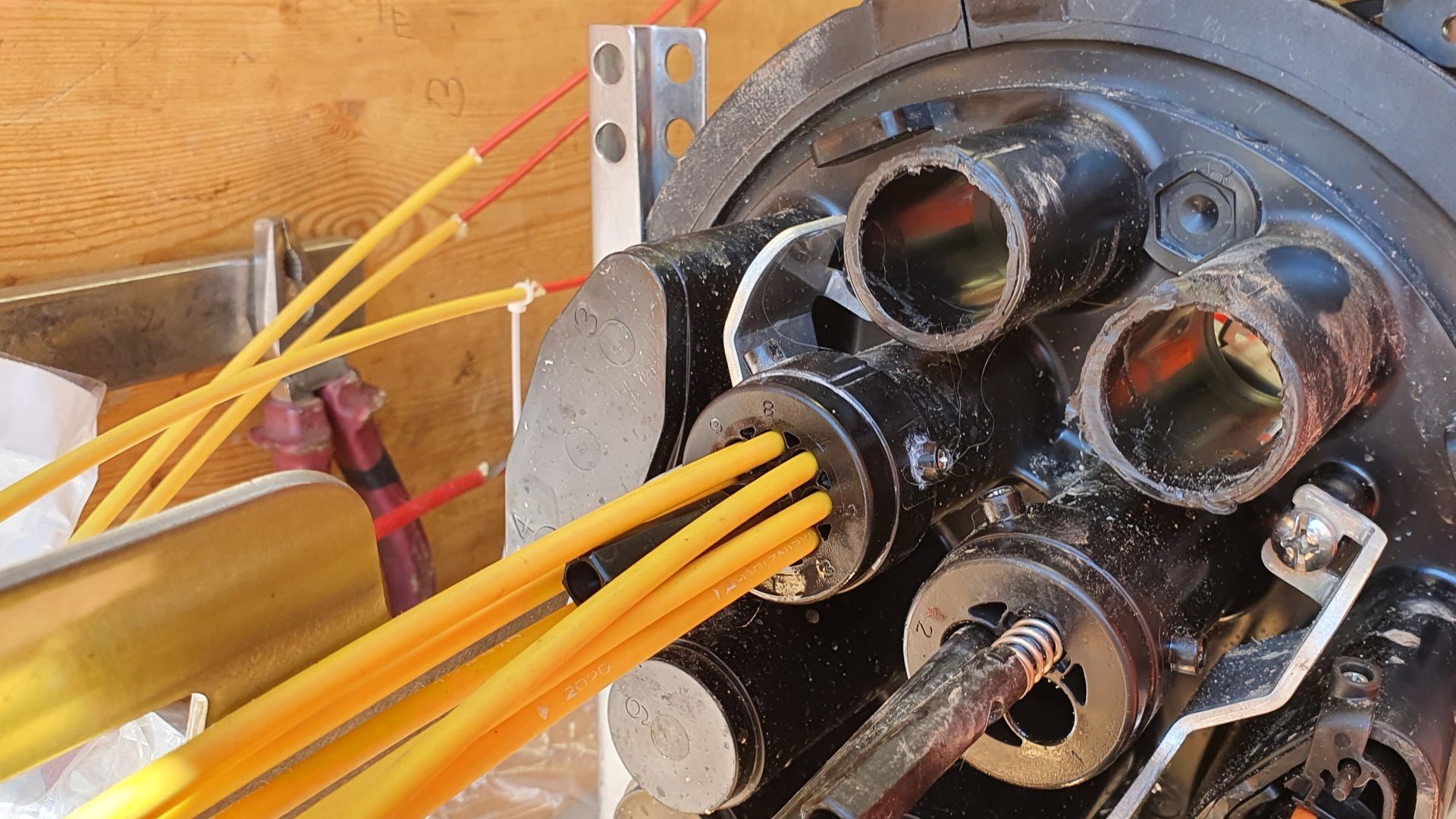
Rock'n Roll-out – Fibre's coming home.
The Wireline Rollout business unit will install 11,300 so-called house connections this year and will therefore provide 34,000 residential units with FTTH.
The FTTH Rollout – the first steps.
The new network expansion era starts for the communities with an inquiry from Swisscom as well as information about the planned broadband expansion. Following this, appointments are made and permits obtained - from the canton, the community and the home owners. cablex Engineering then draws up the construction plans for the FTTH expansion. During the last visit, just before the construction work begins, the community is also introduced to a contact person who is responsible for coordinating the work on site. This is important, because during the construction work there may be short-term obstructions for road users.
Cable "fishing" - for the fastest network in Switzerland.
From the local exchange in Oberweningen, the optical fibre cables run underground through various cable pipes up to the street shafts in the road. This section of the cable route is also called the "feeder". From the street shafts, the cables are then pulled into the residential areas and finally into the homes. This section is also called the "drop".
However, before the optical fibre cable actually reaches the living room of a home, it has to be led through a veritable labyrinth. Similar to a public transport network (see photo below), there are junctions and branches in the network of the underground cable pipes. If many optical fibre cables are fed in, bottlenecks can occur. To avoid damage or the need for "threading", work holes sometimes need to be opened up during cable pulling.
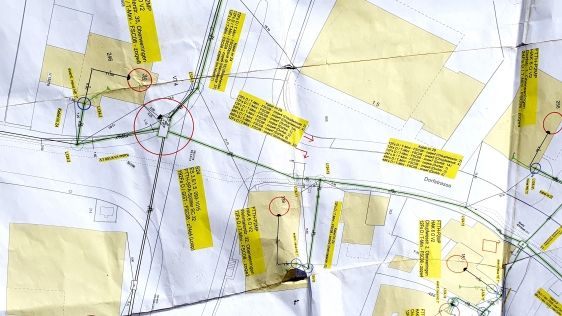
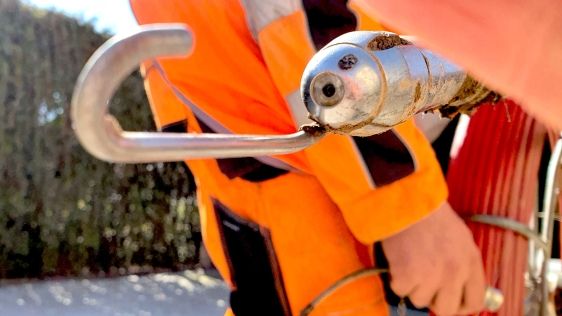
To avoid the need for this, cablex uses camera probes during network expansion work. They can "fish" for the optical fibre cables in the pipes if things aren't quite going as they should. This means: The cable rod is carefully pushed in from one side. A probe with a hook on the end is inserted into the cable duct from the other side. This hook is used to "fish" for the cable and guide it around the bend in the line routing. This saves time and money and avoids the need to open up work holes; it also minimises the disruption to road users.
New technology in the street shaft.
The trunk cable coming from the local exchange runs into the street shaft in the residential area. Depending on the plans, it contains between 72 and 432 fibres in the FTTH rollout. The trunk cable is fed into a sleeve into which one or more splitters are installed, depending on the size. The splitter is then spliced to one of the 432 fibres of the trunk cable. The splitter contains an element made of quartz glass, which refracts the light and deflects or "splits" it at different angles. One optical fibre of the trunk cable can therefore supply up to 32 houses with fast a Internet connection via the splitter.
If several residential units are connected using one fibre, this connection is called Point-to-Multipoint (P2MP). This represents a huge improvement over the previous simple point-to-point (P2P) connections, where one fibre served only one residential unit.
Rock'n Roll-out – Fibre's coming home.
With the XGS-PON splitter technology, every customer can be offered a bandwidth of up to 10 gigabits per second. The upload and download speeds are the same, which is why it is called a symmetrical PON.
XGS-PON therefore means: X = 10, G = Gigabit, S = symmetrical, P = passive, O = optical, N = network
The splitter in the sleeve is the separation point between the trunk (feeder cable) from the local exchange and the drop cable - this is the name given to the cables leaving the splitter in the direction of the house.
The last few metres to the house.
The drop cable has now reached a work hole on the homeowner's property. There is a separate cable laying plan for each house. This also includes the cable numbers and shafts that supply the house junction boxes (HJB/BEP). A probe is first carefully pushed in from the work hole on the property into the house connection, and then a "knock" test is carried out. The "knocking" of the colliding probe shows the technicians where the house junction box is located. The "knock" test and site plan reveal the precise location of the house junction box, which in turn enables the house connection to be set up with a minimal amount of digging (maintenance costs). Once the cable has reached the customer's house, the house connection is carefully sealed to prevent the ingress of gas and water.
The Wireline Rollout business unit will install 11,300 so-called house connections this year and will therefore provide 34,000 residential units with FTTH.


